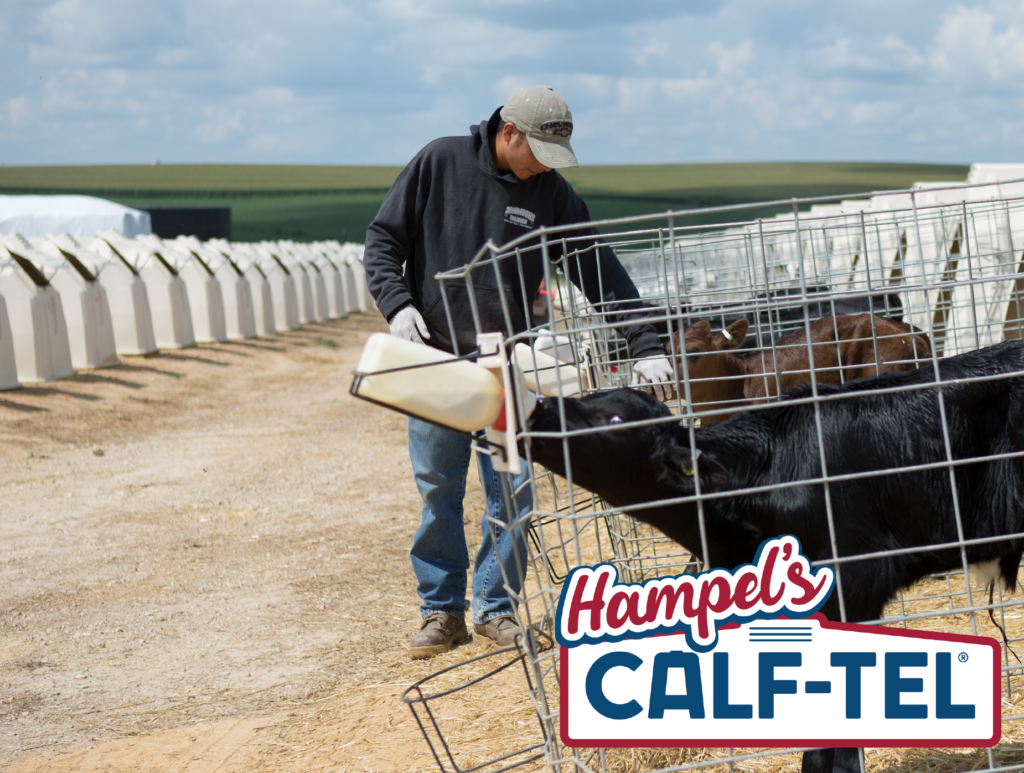
By Sarah Morrison, Ph. D.
A new year means many people have already made resolutions for improvement. I am not one for resolutions but often find this time of year as a good time to reflect on what has happened in the last year and where I would like to go in the next. We often get caught up in all the hustle and bustle but sometimes we just need to go back to basics and make sure we are still doing all the “easy stuff” the way it should be done.
A key pillar of a successful calf program is maintaining the health of those young animals. Calves are the most susceptible to disease and a contributing factor to increased risk could be the hygiene standards of the farm. If improperly managed, there could be increased pathogen load and exposure. Proper management and good hygiene standards will leave your calves less susceptible to health challenges in the preweaning period.
One area to focus on in terms of hygiene standards is calf feeding equipment cleanliness. This includes buckets, nipples, bottles, esophageal tube feeders, and tubes of auto milk feeders. Each calf has direct contact with these multiple times of day and could be the perfect source of inoculation to the calf’s gastrointestinal tract if not properly cleaned and sanitized regularly.
The standard SOP for adequate cleaning of feeding equipment after every use are as follows (Stewart et al., 2005):
- Disassembly of the individual parts.
- Rinse with lukewarm water until visibly clean.
- Place in hot water with detergent.
- Scrub all surfaces (inside and outside) with a brush.
- Rinse with hot water containing acid sanitizer.
- Drain and air dry completely.
How do you determine cleanliness?
- Visual inspection– This is fast and convenient. It can be done routinely. However, it is very subjective and lacks the sensitivity to detect clean surfaces that are heavily contaminated.
- Microbiological analysis– This is a scientifically proven method but is time consuming and cannot be completed on farms. However, this would give a definitive answer of contamination on a surface, even when it appears “clean”.
- ATP luminometry– This is a method that quantifies the amount of ATP (energy present in every life form) into relative light units (RLU) by a chemical luminescent reaction with an enzyme. This allows for on-site assessment of cleanliness and has been commonly used in hospitals and the food industry.
A paper published in the Journal of Dairy Science (106:8885–8896) evaluated 50 commercial farms in Quebec through a questionnaire that included self-reported cleaning practices of feeding equipment. This encompassed the frequency of cleaning and replacing feeding equipment of preweaning calves, products and utensils used for cleaning and disinfecting, and the temperature of the water.
Samples from feeding equipment (buckets, nipples, bottles, esophageal tube feeders, and tubes of auto milk feeders) were evaluated by visual inspection, microbiological analysis, and two methods of ATP luminometry. Microbiological samples were taken to get total bacteria count and total coliform count. Two commercially available products were used to evaluate ATP luminometry. One was UltraSNAP (surface ATP test) and one was MicroSnap (coliform test).
In the paper of Quebec herds, there was a wide range in reported hygiene procedures of the feeding equipment. Half of the farms claimed they unscrewed the nipples before cleaning. The different utensils used were brush (68% of farms), washcloth (2%), sponge (2%), or no utensil (28%).
Only 4.3% of farms in this survey reported cleaning feeding utensils after every use.
The temperature of water used for cleaning was very hot (20% of farms), hot (56%), lukewarm (16%), and cold (8%), but no temperature was determined. The primary cleaning product used was dishwashing soap for 40% of respondents, but other soaps were used by others.
Only 40% of farms used disinfectant for feeding equipment, the most popular was sodium hypochloride (50%), followed by penta-potassium bis (peroxymonosulphate bis (sulfate), also known as Virkon (46%; Vetoquinol) and a combination of iodine with sodium hypochloride (4%).
The rinsing process, only 10% used a utensil, which was a brush. The temperature of the rinsing water was very hot (18% of farms), hot (12%), lukewarm (32%), and cold (38%).
Most equipment generally looked clean from visual inspection. All feeding equipment showed contamination, buckets, and tubes of automatic milk feeders were more contaminated compared with nipples, bottles, and esophageal tubes. High contamination of one specific piece of feeding equipment on a farm was not automatically correlated with a high contamination of other feeding equipment on that same farm. There were positive correlations between ATP luminometry and visual scores of buckets, nipples, bottles, and esophageal tubes. However, the study showed that contamination can still be present even when the feeding equipment looks ok to the naked eye.
How does your calf feeding equipment cleanliness stack up?
Sarah Morrison, Ph. D. is involved in dairy research at the W.H. Miner Institute in Chazy, NY and can be reached at morrison@whminer.com.
